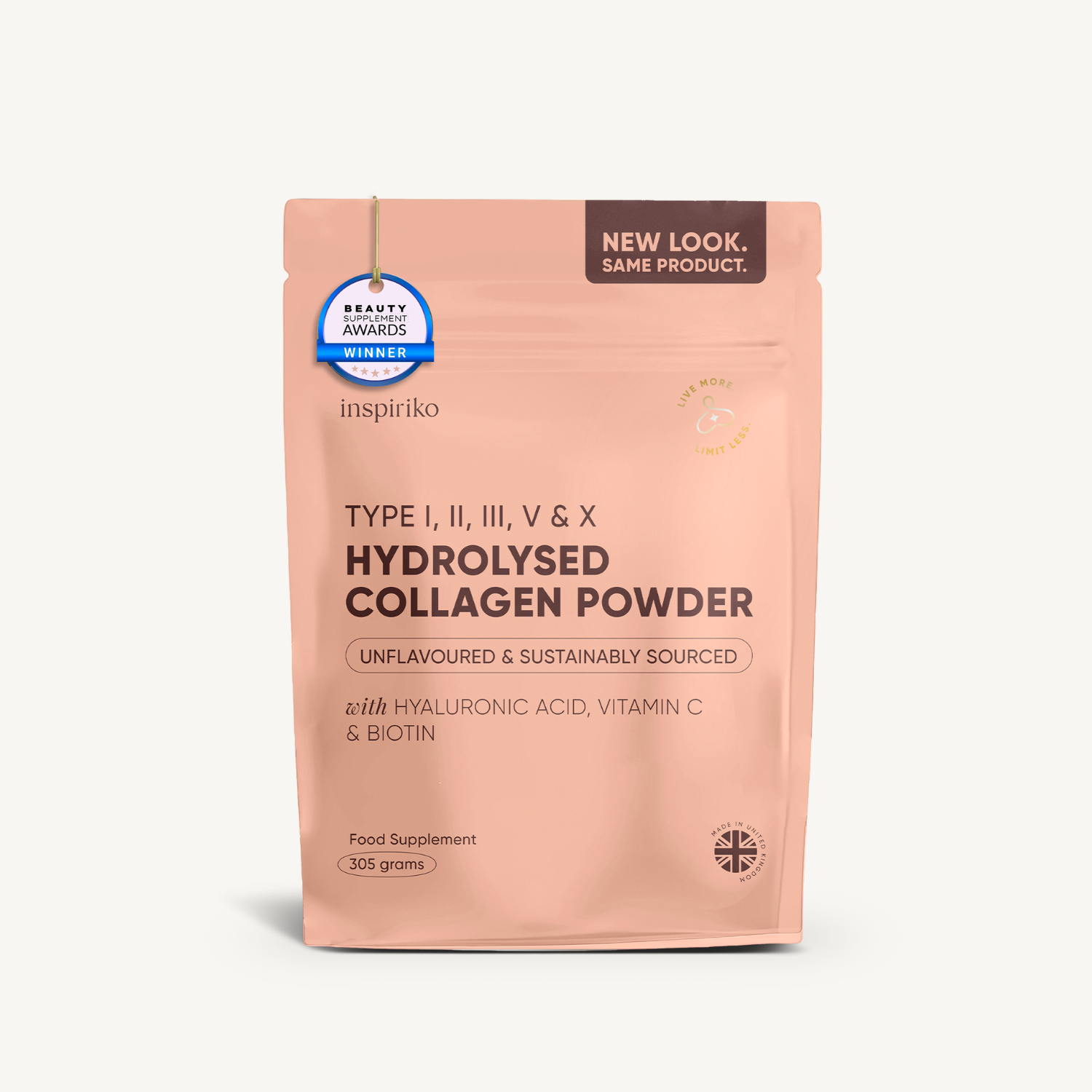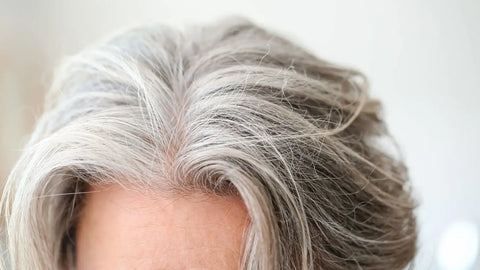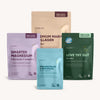For many women, menopause is a significant milestone that marks the end of their reproductive years and a moment to celebrate. But for other women, it marks the beginning of a difficult period plagued by hot flashes, mood swings, night sweats, changing skin, and more fragile hair.
Due to menopausal hormonal changes, your hair may become dry, brittle, and prone to breakage (what is called “menopause hair”). If you want to keep your mane healthy and vibrant, you’ll need to pay extra attention to your hair care routine while strengthening your diet. In this article, we'll share some tips and tricks for taking care of your hair during menopause and go back to feeling confident and beautiful throughout this transition. Let’s go!
What Are the Main Hair Changes During Menopause?
Menopause is a natural part of the aging process for women, much like gray hair. When you reach the age of 40, your body slowly stops producing female hormones like estrogen and progesterone and your periods become scarce until they fully stop (1). These hormone changes can cause various symptoms, such as hot flashes, mood swings, weight gain, insomnia, and even hair loss. In fact, half the women who go through postmenopause report symptoms like hair thinning and loss (2).
But how do these female hormones affect your hair, you may wonder? Well, when we're young, our hormones help keep our hair growing strong and healthy. But as we age, the growing phase of the hair cycle shortens, and new strands can't replace the hair that's naturally shed (3). Let’s explore the most common changes you may notice, and why they happen.
Dry Scalp
As hormone levels drop, the sebaceous glands in your scalp slow down. These glands are responsible for producing natural oils that keep your scalp moisturised and your hair conditioned. The result? A dry, itchy scalp that might feel tight or flaky, and hair that becomes more brittle and prone to breakage. This can also affect the health of your follicles, making hair more vulnerable to thinning.

Hair Thinning
One of the most noticeable changes for many women during menopause is hair thinning. This happens because the growth (anagen) phase of the hair cycle becomes shorter, and more hair follicles shift into the shedding (telogen) phase. Oestrogen, which usually prolongs the growth phase, no longer plays its protective role. The outcome is less density and more visible scalp—particularly around the crown and temples.
Inflammation
Hormonal fluctuations can trigger inflammatory responses in the body, and your scalp isn’t immune. Inflammation around the hair follicles can hinder healthy hair growth and exacerbate hair shedding. You might notice tenderness, redness, or even an increase in hair fall during brushing or washing.
Change in Hair Shape or Texture
Have your soft, manageable locks suddenly turned curly, frizzy, or uncooperative? That’s not your imagination. Hormonal changes affect the protein structure in hair, altering its shape. Straight hair may develop a wave or kink, and curly hair might become frizzier or more unpredictable. This can be surprising and even frustrating—but it's a common shift.

Coarse, Wiry Feel
Even if your hair isn’t falling out, you might feel like it’s no longer soft or silky. That’s because reduced sebum production (from your dry scalp) and changes to keratin, the main structural protein in hair, can make strands feel rougher or more wiry. This can be especially noticeable if your hair was previously fine or smooth.
Dull-Looking Strands
Your hair’s natural shine comes from its smooth outer layer, the cuticle, and the oils that coat it. Menopausal hair can lose its luster due to both internal (hormonal) and external (heat, styling, weather) factors. When the cuticle lifts or becomes damaged, light doesn’t reflect as easily, making your hair appear flat or lifeless.
How to Create a Menopause Hair Care Routine
As mentioned above, hormonal shifts during perimenopause and menopause can affect hair growth, texture, and overall health. But don't worry, we are here to help you create a hair care routine that will suit your changing hair needs during these trying times.
1- Use Suitable Products
To start a menopause-friendly hair routine, the first thing is to look for gentle, moisturizing shampoos and conditioners that are formulated specifically for dry or damaged hair. These products typically contain moisturizing oils like coconut, avocado, or argan that help repair your strands (4), increasing elasticity and preventing further damage.
Additionally, you can incorporate weekly hair masks into your routine to nourish and hydrate your hair, restoring its natural shine. And if you want to give your hair a little extra oomph, choose thickening shampoos and treatments that contain biotin, hydrolyzed wheat, or rice proteins. These super ingredients can temporarily thicken the diameter of your hair shaft, making your hair feel fuller.

2- Learn to Wash Your Hair
Before washing your menopause hair, here’s some advice:
Do…
-
Gently brush your hair to remove any tangles or knots.
-
Apply a pre-wash treatment or oil to your hair to help moisturize and nourish it.
-
Rinse your hair thoroughly to ensure that all the shampoo is removed.
Don't…
-
Don't use hot water to wash your hair, as this can dry out your hair and scalp further.
-
Don't rub your hair vigorously with a towel after washing, as this can cause frizz and damage to the hair cuticles.
-
Don't use a clarifying shampoo or one that contains harsh chemicals like sulfates.
And after washing you hair, don’t forget to:
-
Apply a conditioner or hair mask, focusing on the ends, to revitalize your mane.
-
Rinse your hair with cool water to help seal the cuticles and retain moisture.
-
Use a microfiber towel or a cotton t-shirt to gently squeeze excess water.
-
Apply a leave-in conditioner or serum.
-
Allow your hair to air dry or use a diffuser on low heat.
Change Your Style
A simple solution might just be a new haircut! Hairstylists often recommend a shorter hairstyle for women with thinning hair, which can easily add volume and texture. Think cute pixies or trendy bobs. Another trick to try is getting some highlights or lowlights, which can also create the illusion of more depth and dimension in your hair, making it look fuller and thicker.
Healthy Diet, Healthy Hair
And don't be too quick to blame your genes or hormones for your menopause hair! Your diet could also be a culprit (5). But fear not, the solution is simple: load up on protein-rich foods to keep your hair thick and luscious. Your hair follicles rely on protein to produce new stands; if your diet is lacking, your hair growth could be seriously stunted.
Here are some of the foods you should incorporate into your diet:
-
Beans, lentils, and whole grains, which are also high in zinc.
-
Salmon, tofu, and soy products, high in Omega-3 fatty acids and protein.
-
Leafy greens and nuts, also high in magnesium.
-
Red meat, eggs, chicken, spinach, dates, kale, which are very high in protein.
And if you’re having trouble keeping a healthy diet, you can resort to natural supplements like Smarter Magnesium and easily get all the nutrients you need for a strong, luscious mane!

Conclusion
It's not your imagination: menopause hair changes do exist. Hair can become drier, thinner, and frizzier before and during menopause. While hot flashes and mood swings are commonly known symptoms, hair health is often overlooked, but hormonal changes during menopause can lead to dry, brittle, and thinning hair.
By incorporating a menopause-friendly hair care routine, using suitable products, and maintaining a healthy diet, you can keep your hair looking its best during this transitional period. And as a final piece of advice, don't forget to embrace your unique beauty. Remember that your hair does not define you and that confidence and self-love are the best accessories you can wear at any age!
FAQs
How often should I wash my hair during menopause?
Can scalp massage help with menopause hair loss?
Is heat styling safe for menopausal hair?
Are satin pillowcases helpful for hair during menopause?
Related Products
References for the blog
-
Santoro, N., Epperson, C. N., & Mathews, S. B. (2015). Menopausal Symptoms and Their Management. Endocrinology and Metabolism Clinics of North America, 44(3), 497–515.
https://doi.org/10.1016/j.ecl.2015.05.001 -
Chaikittisilpa, S., Rattanasirisin, N., Panchaprateep, R., Orprayoon, N., Phutrakul, P., Suwan, A., & Jaisamrarn, U. (2022). Prevalence of female pattern hair loss in postmenopausal women: a cross-sectional study. Menopause, 29(4), 415–420.
https://doi.org/10.1097/gme.0000000000001927 -
Burg, D., Yamamoto, M., Namekata, M., Haklani, J., Koike, K., & Halasz, M. (2017). Promotion of anagen, increased hair density and reduction of hair fall in a clinical setting following identification of FGF5-inhibiting compounds via a novel 2-stage process. Clinical, Cosmetic and Investigational Dermatology, Volume 10, 71–85.
https://doi.org/10.2147/ccid.s123401 -
Rele AS, Mohile RB. Effect of mineral oil, sunflower oil, and coconut oil on prevention of hair damage. J Cosmet Sci. 2003 Mar-Apr;54(2), 175-200.
-
Rushton, D. H. (2002). Nutritional factors and hair loss. Clinical and Experimental Dermatology, 27(5), 396–404.
https://doi.org/10.1046/j.1365-2230.2002.01076.x







